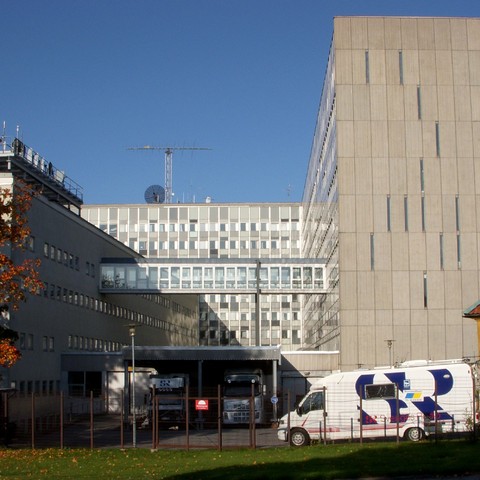Composers / Arne Nordheim / Places catalog
Swedish Radio
When Arne Nordheim began taking an interest in contemporary music, during his studies at the Oslo Conservatory, musical life in the Norwegian capital was very conservative, not just in respect to musical education. A decisive role in his development as a composer was played by late programmes on Swedish Radio: ‘Nocturnal exercises – literary and musical – until you fall asleep’. Those programmes did more than fuel Nordheim’s literary interests; they also introduced him to the music of Swedish composers of the forties and other works that were completely unknown in Norway.
Among the Swedish composers, frequently played were Karl-Birger Blomdahl (1916–1968), Ingvar Lidholm, Sven-Erik Bäck and Bo Nilsson. They represented a completely different musical language to the national-romantic style that continued to dominate in Norway. Swedish Radio played a lot of modern music, and Nordheim stated in later years that those programmes became an important part of his musical education, including the analyses of modern poems that he later used in his works.
From 28 May to 5 June 1953, the New Music Association in Oslo organised the 27th ISCM World Music Days, with the participation of composers from nineteen countries. The festival was stylistically varied. A performance of Karl-Birger Blomdahl’s I Speglarnes Sal [In the hall of mirrors] opened Nordheim’s ears to entirely new compositional paths. At the Young Nordic Music Festival in Stockholm in 1954, his first composition for string quartet was performed: Essay no. 2. Nordheim kept in touch with Swedish composers, and towards the end of the fifties, now a more accomplished composer, he received many commissions from Swedish musical institutions, including the Fyklingen Society for Experimental Music and Art and the Sveriges Rikskonserter concert agency. Epitaffio for orchestra and tape was first performed in 1963 at Swedish Radio by the Swedish Radio Symphony Orchestra under Francis Travis.
A turning point came when Karl-Birger Blomdahl, as head of music, commissioned Eco for soprano, children’s choir and mixed choir with orchestra. That work was first performed during the Nordic Music Days in Stockholm on 24 September 1968, with the participation of 160 artists, and a year later it was recorded. For Eco, Nordheim also received an award from the Nordic Council.
The word Eco refers to the echoes that can be heard in Salvatore Quasimodo’s poems ‘I morti’ [The dead], from 1930, and ‘Alle fronde dei salici’ [On the willows’ branches], from 1947. The former, with its white sky and silence, gazelles drinking water and the scent of juniper, shatters in the darkness on colliding with the latter, which is dominated by the piercing cry of war. The composer had heard those poems on the late programmes on Swedish Radio. Nordheim often took part in Swedish radio programmes on contemporary music, and his music was also frequently broadcast there.
In 1979, the Swedish Radio Symphony Orchestra under Okku Kamu gave the first performance of the cantata Tempora Noctis for soprano, mezzosoprano, orchestra and tape. (jc)
-

Swedish Radio in Stockholm. Phot Holger Elgaard.